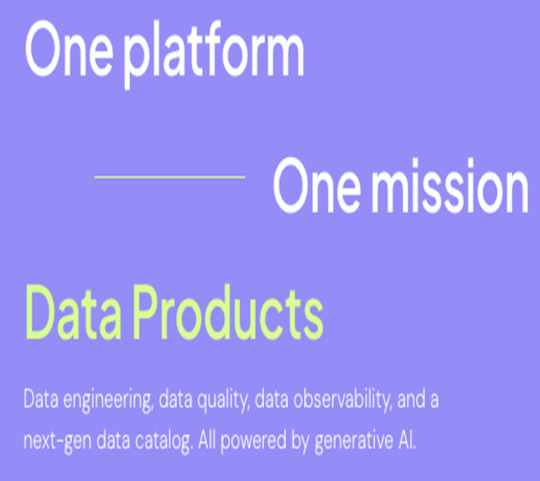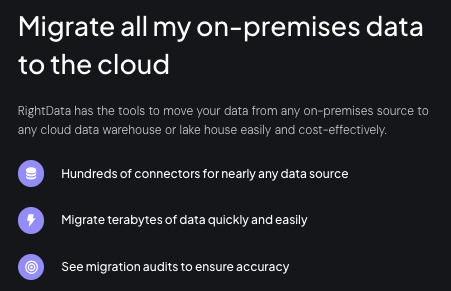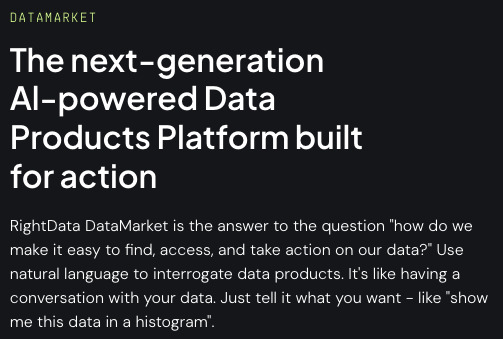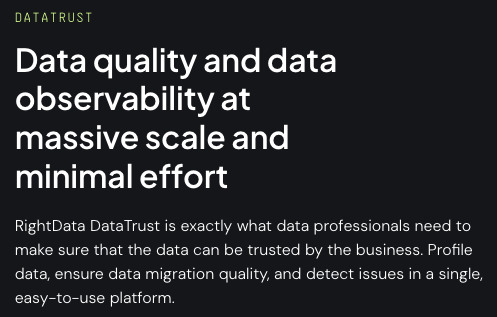#data validation
Explore tagged Tumblr posts
Text
Introduction
Microsoft Excel is a powerful tool used by students, professionals, and businesses. It helps in data management, calculations, and automation. However, when it comes to data processing, users often face a dilemma: Should they use Power Query or Excel formulas? Both have their advantages, but choosing the right one depends on your specific needs.
Understanding Power Query and Excel Formulas
What is Power Query?
Power Query is a data transformation and automation tool in Excel. It allows users to connect, clean, and reshape data efficiently. It is especially useful when dealing with large datasets. Read more…
📚 Learn Microsoft Excel: Attitude Academy
📍 Visit Us: Yamuna Vihar | Uttam Nagar
📞 Call: +91 9654382235
🌐 Website: www.attitudetallyacademy.com
📩 Email: [email protected]
#ms excel#power query#excel formulas#advance excel#data visualization#data validation#skills development#job skills
1 note
·
View note
Text
1 note
·
View note
Text

VADY – Smart Data, Smarter Decisions
In today’s digital age, data is a cornerstone for decision-making. However, not all data is created equal. VADY turns smart data into smarter decisions, giving businesses a clearer understanding of their operations, customers, and market trends. Through AI-powered analytics, VADY processes vast amounts of complex data and distills it into actionable insights. This empowers organizations to make strategic decisions quickly and with confidence. From reducing operational risks to discovering new growth opportunities, VADY ensures that your business leverages the full potential of its data to make smarter, more impactful choices in a competitive world.
#vady#newfangled#data democratization#big data#data analytics#generativebi#nlp#generativeai#artificial intelligence#data analysis#data at fingertip#data visualization#ai to generate dashboard#data validation
0 notes
Text
#Tableau#Tableau Reporting#Data Validation#DataOps Suite#Datagaps#Automating Tableau Reports Validation
0 notes
Text
In an era where data shapes decisions, maintaining accurate data is vital.
Erroneous or inconsistent data can lead to costly mistakes that affect a business's bottom line and reputation.
0 notes
Text

My CC is letters and symbols I swear!
1 note
·
View note
Text

CRM Data Enrichment and cleansing service
Optimize your business with Apeiro Solutions database management & Administration Services. Include data validation, enrichment, and cleansing to keep your CRM accurate and efficient.
0 notes
Text
Data verification services play a crucial role in the healthcare industry, ensuring the accuracy and reliability of patient information. By minimizing errors and enhancing decision-making, these services support better patient care and operational efficiency. Organizations benefit from secure, validated data to maintain compliance and trust. Discover how verified data can transform healthcare operations for improved outcomes.
0 notes
Text
#data migration#data validation#googlecloudplatform#cloud optimisation services#google cloud migration#google cloud
0 notes
Text
Right Data
RightData is a low-code, AI-powered data products platform designed to empower companies in creating, governing, and delivering trusted data products. With an emphasis on data quality, observability, and governance, our platform simplifies the complexities of data management. Whether it’s ingesting, preparing, verifying, or cataloging data, we ensure a streamlined, no-code process that enhances data findability and actionability through our DataMarket, DataTrust, and DataFactory services.
RightData equips businesses to build, manage, and act on data products efficiently — reducing costs, increasing productivity, and delivering actionable insights with minimal effort.
Business Hours: Mon — Fri: 9am — 5pm Payment Methods: Debit card — credit card Owner Name: Vasu Sattenapalli
Contact Info: Right Data Address: 3423 Piedmont Rd NE Suite 228, Atlanta, Georgia 30305 USA Phone: +1 470–722–0141 Website: https://www.getrightdata.com Business Email: [email protected]
LinkedIn: https://www.linkedin.com/company/getrightdata Google Business Profile: https://www.google.com/search?q=right+data&rlz=1C5CHFA_enCO1102CO1102&oq=right+data&gs_lcrp=EgZjaHJvbWUyBggAEEUYPDIJCAEQRRg5GIAEMgcIAhAAGIAEMgcIAxAAGIAEMgcIBBAAGIAEMg0IBRAuGK8BGMcBGIAEMgYIBhBFGDwyBggHEEUYPNIBCDQ2MzZqMGo3qAIAsAIA&sourceid=chrome&ie=UTF-8
Keywords: DataTrust, DataMarket, data management, data validation, etl tool








1 note
·
View note
Text
"𝐈𝐭'𝐬 𝐔𝐍𝐏 𝐄𝐝𝐮𝐜𝐚𝐭𝐢𝐨𝐧!"– that's what our students and alumni proudly say. With live courses and a commitment to quality, we're empowering minds and igniting futures every day. Join the UNP community and be a part of something bigger!
𝐄𝐧𝐫𝐨𝐥𝐥 𝐓𝐨𝐝𝐚𝐲:
𝐏𝐲𝐭𝐡𝐨𝐧 𝐟𝐨𝐫 𝐃𝐚𝐭𝐚 𝐒𝐜𝐢𝐞𝐧𝐜𝐞: https://unp.education/course-overview/python-for-data-science
𝐌𝐚𝐬𝐭𝐞𝐫𝐢𝐧𝐠 ��𝐮𝐬𝐢𝐧𝐞𝐬𝐬 𝐈𝐧𝐭𝐞𝐥𝐥𝐢𝐠𝐞𝐧𝐜𝐞 𝐰𝐢𝐭𝐡 𝐏𝐨𝐰𝐞𝐫 𝐁𝐈: https://unp.education/course-overview/mastering-buisness-intelligence-with-power-bi
𝐌𝐚𝐬𝐭𝐞𝐫𝐢𝐧𝐠 𝐃𝐚𝐭𝐚 𝐒𝐜𝐢𝐞𝐧𝐜𝐞 𝐚𝐧𝐝 𝐌𝐋 𝐰𝐢𝐭𝐡 𝐏𝐲𝐭𝐡𝐨𝐧: https://unp.education/course-overview/mastering-data-science-and-ml-with-python
0 notes
Text
Top 5 Challenges of Data Validation in Databricks and How to Overcome Them
Databricks data validation is a critical step in the data analysis process, especially considering the growing reliance on big data and AI. While Databricks offers a powerful platform for data processing and analytics, flawed data can lead to inaccurate results and misleading conclusions. Here’s how to ensure your Databricks data is trustworthy and ready for analysis. Read the full post on "Challenges of Data Validation in Databricks".
1 note
·
View note
Text
A Beginner’s Guide to Data Cleaning Techniques

Data is the lifeblood of any modern organization. However, raw data is rarely ready for analysis. Before it can be used for insights, data must be cleaned, refined, and structured—a process known as data cleaning. This blog will explore essential data-cleaning techniques, why they are important, and how beginners can master them.
#data cleaning techniques#data cleansing#data scrubbing#business intelligence#Data Cleaning Challenges#Removing Duplicate Records#Handling Missing Data#Correcting Inconsistencies#Python#pandas#R#OpenRefine#Microsoft Excel#Tools for Data Cleaning#data cleaning steps#dplyr and tidyr#basic data cleaning features#Data validation
0 notes
Text
5 Challenges of AI in Healthcare
New Post has been published on https://thedigitalinsider.com/5-challenges-of-ai-in-healthcare/
5 Challenges of AI in Healthcare
Imagine a world where your smartwatch not only tracks your steps but also predicts a heart attack before it happens. It’s closer to reality than you think.
Artificial intelligence (AI) integration in healthcare has begun, unlocking many use cases for healthcare providers and patients. The AI healthcare software and hardware market is expected to surpass $34 billion by 2025 globally.
Among the technology and processes indicative of these investments in healthcare include:
Robotic nurses to aid surgeons.
Wearables for real-time health monitoring.
Medical AI chatbots for enhanced self-care.
Predictive diagnosis based on existing health symptoms.
However, these applications also come with complex challenges. This blog will explore the five challenges in implementing AI in healthcare, their solutions, and their benefits.
Challenges of Using AI in Healthcare
Physicians, doctors, nurses, and other healthcare providers face many challenges integrating AI into their workflows, from displacement of human labor to data quality issues.
1. Displacement of Human Employees
There is a growing concern that AI could replace healthcare professionals, including job displacement, an outdated skillset, and mental and financial hardships. This potential shift may deter medical groups from adopting AI, causing them to forego many benefits.
The challenge lies in balancing the integration of AI for routine tasks and retaining human expertise for complex patient care, where empathy and critical thinking are irreplaceable.
2. Ethical and Privacy Issues
Obtaining informed consent from patients on how AI systems will use their data can be complex, especially when the public does not fully understand the underlying logic. Some providers might also disregard ethics and use patient data without permission.
Additionally, biases in training data could result in unequal treatment suggestions or misdiagnosis. This discrepancy can disproportionately affect vulnerable groups.
For example, an algorithm that predicts which patients need more intensive care based on healthcare costs rather than actual illness. This incorrectly attributed a lower disease burden to black people.
Furthermore, AI’s ability to identify individuals through large amounts of genome data, even when personal identifiers are removed, poses a risk to patient confidentiality.
3. Lack of Digital Training and Adoption Barriers
A major problem is that medical students receive insufficient training on AI tools and theory. This unpreparedness makes adopting AI difficult during their internships and work.
Another significant barrier is the reluctance of some individuals to embrace digital technologies. Many people still prefer traditional, in-person consultations due to multiple reasons, such as:
The relatable nature of human interactions.
Uniqueness neglect by AI.
The higher perceived value of human doctors, etc.
This resistance is often compounded by a general lack of awareness about AI and its potential benefits, particularly in developing countries.
4. Professional Liabilities
The use of AI systems in decision-making introduces new professional liabilities for healthcare providers, raising questions about ownership if AI initiatives are ineffective. For example, doctors can defer treatment plans to AI without taking responsibility for failed patient examinations.
Furthermore, while machine learning (ML) algorithms can offer personalized treatment recommendations, the lack of transparency in these algorithms complicates individual accountability.
Additionally, reliance on AI could lead to complacency among healthcare professionals, who might defer to computerized decisions without applying their clinical judgment.
5. Interoperability Problems and Data Quality Issues
Data from different sources can often fail to integrate seamlessly. Inconsistency in data formats across systems makes it difficult to access and process information efficiently, creating information silos.
Moreover, poor data quality—such as incomplete or inaccurate records—can lead to flawed AI analysis, ultimately compromising patient care.
Considering these challenges, how can healthcare organizations leverage the full potential of AI?
Solutions to Healthcare AI Problems
Solving the challenges introduced by AI involves a top-down approach. It begins with ensuring that data analysts thoroughly vet datasets used to train AI algorithms to eliminate biases and low-quality data. Transparency with patients regarding AI’s role in their treatment is also crucial to increase adoption.
An example is the Mayo Clinic, which used an algorithm that analyzed over 60,000 images to detect pre-cancerous signs. The algorithm’s accuracy was 91% compared to a human expert’s.
Apart from fixing old datasets, health regulatory bodies, such as the European Medicines Agency (EMA), must collect new, error-free data representing diverse populations to enhance accuracy. OpenAPS is an example of an initiative to create an inclusive open-source collection of systems to treat type 1 diabetes accurately.
Additionally, hospitals should enhance training and education for healthcare professionals. Educational authorities can also extend this specialized training to universities to prepare future practitioners.
This initiative will ensure familiarity with and expertise in AI tools and reduce resistance to their adoption in a professional setting. For example, Intuitive Surgical Ltd’s investment in the da Vinci system has helped doctors in over 5 million surgeries.
Investing in modern data integration tools, such as Astera and Fivetran, with built-in data quality features will also help. These tools remove siloed data and improve interoperability. They also enable data validation to ensure AI algorithms have clean data to analyze.
To effectively integrate AI systems into healthcare, medical institutions must balance leveraging AI and preserving human expertise. Adopting hybrid approaches like human-in-the-loop (HITL) models can help alleviate fears of job displacement. This approach will also ease patient concerns about AI involvement while allowing workers to improve productivity.
And, what are the benefits of successful AI integration within healthcare?
Benefits of AI in Healthcare
AI provides many benefits in the healthcare industry, including improved diagnosis and higher work efficiency:
1. Enhanced Diagnostic Accuracy
AI is transforming diagnostic processes by rapidly analyzing medical images, lab results, and patient data with remarkable precision. This ability to process large amounts of information quickly leads to early, potentially more accurate diagnoses, improving disease management.
2. Personalized Treatment Plans
AI-powered deep learning algorithms can process extensive datasets to create personalized treatment plans tailored to individual patients. This customization improves the efficacy of treatments and minimizes side effects by addressing each patient’s specific needs based on extensive sample data.
3. Operational Efficiency
By automating administrative tasks such as scheduling appointments and billing, AI allows healthcare providers to spend more time and effort on direct patient care. This shift reduces the burden of routine tasks, cuts costs, streamlines operations, and improves overall efficiency.
4. Improved Patient Monitoring
AI-powered tools, including wearable devices, offer continuous patient monitoring, providing real-time alerts and insights. For example, these devices can alert medical services in case of an unusually high heartbeat, which could indicate a physical injury or heart condition.
This proactive approach enables healthcare providers to respond swiftly to changes in a patient’s condition, improving disease management and overall patient care.
Looking Ahead
Emerging technologies, like virtual reality (VR) in medicine, will play a critical role. Many healthcare tasks, from diagnostics to treatment, will be AI-powered, enhancing access to care patient outcomes.
However, healthcare authorities must balance AI’s benefits and challenges to ensure ethical and effective integration into patient care. This will transform the healthcare delivery systems in the long term.
Explore Unite.ai for more resources on AI and healthcare.
#000#ai#AI chatbots#AI in healthcare#AI integration#AI systems#ai tools#AI-powered#alerts#algorithm#Algorithms#Analysis#applications#approach#artifical intelligence#artificial#Artificial Intelligence#awareness#barrier#billion#Blog#challenge#chatbots#continuous#data#Data Integration#data integration tools#data quality#data validation#datasets
1 note
·
View note
Text
Sneak Peak into ServiceNow’s Robotic Automation
What exactly is a Robotic Process Automation?
Robotic Process Automation involves taking advantage of software robots to automate sequential and rule-based tasks or processes, thereby enhancing productivity and decreasing dependence on manual work.
“ ServiceNow RPA can automate a wide range of tasks across various departments and functions, including data entry, form filling, report generation, data extraction, and more. This flexibility allows organizations to automate processes tailored to their specific needs. “
What does ServiceNow RPA signify?
ServiceNow’s Robotic Process Automation (RPA) empowers organizations to automate continuous tasks that require manual interference with the help of software Robots. In the new era, ServiceNow RPA means that the robotic automation capabilities are smoothly integrated within the ServiceNow platform. These bots are capable of achieving a wide array of tasks such as data entry, extraction, form filling, and more, directly within the ServiceNow environment. The main objective of ServiceNow RPA is to boost operational efficiency, minimize errors, and liberate employees to concentrate on strategic and value-added activities.
Elements of ServiceNow RPA:
ServiceNow RPA typically offers a development environment that requires No-Code/Low-Code Development.
Workflow Automation automates tasks and workflows including the interactions with various software systems, applications, and databases.
ServiceNow RPA employs bots to replicate human actions such as clicking, typing, and data copying to execute tasks.
ServiceNow RPA ensures the protection of sensitive data and compliance with regulatory standards in automation processes.
It often includes pre-built integrations with third-party applications, databases, web services, etc.
Different kinds of RPA robots
Attended Robot refers to software robots or bots that work alongside human employees to assist with specific tasks. Unlike unattended robots, which operate autonomously without human intervention, attended robots require human oversight and collaboration. These robots typically interact with users in real-time, either on their desktops or within specific applications, to provide support, automate repetitive tasks, and enhance productivity.
An unattended Robot is a software robot/bot that operates single-handedly without human intervention. Unlike attended robots, which work alongside humans and require human oversight, unattended robots are designed to execute tasks independently. They typically operate on servers or virtual machines and can perform repetitive and rule-based tasks without the need for human interaction.
ServiceNow’s development into Robotic Process Automation
Acknowledging the increasing significance of automation in contemporary enterprises, ServiceNow has integrated RPA into its platform. This expansion enables organizations to uphold their automation activities by integrating software bots into their workflows. With this addition, ServiceNow has broadened its suite of offerings to encompass RPA, thereby providing a unified solution for process automation.
ServiceNow RPA significance
ServiceNow RPA holds significance for several reasons:
Enhanced Efficiency: By automating repetitive and rule-based tasks, ServiceNow RPA streamlines workflows and increases operational efficiency. This allows employees to focus on more strategic and value-added activities.
Reduced Errors: Automation minimizes the likelihood of human error, leading to improved accuracy and reliability in task execution.
Cost Savings: With tasks automated through RPA, organizations can reduce labor costs associated with manual processes, leading to significant cost savings in the long run.
Integration: ServiceNow RPA seamlessly integrates with other ServiceNow applications, providing a unified platform for process automation across the organization.
“ ServiceNow RPA offers a comprehensive solution for organizations looking to streamline their operations, increase efficiency, and drive digital transformation through automation. ”
What are the processes for automating ServiceNow RPA?
When considering processes to automate with ServiceNow RPA, focus on tasks that are repetitive, rule-based, and prone to human error. A few to keep in mind are:
Report Generation
Data Entry and Retrieval
Data Validation
Notification and Alerts
File Management
User Onboarding and Offboarding
Invoice Processing
Service Desk Operations
Inventory Management
Data Migration
#robotic automation#RPA#robotic process automation#data extraction#data validation#servicenow#ecommerce
0 notes